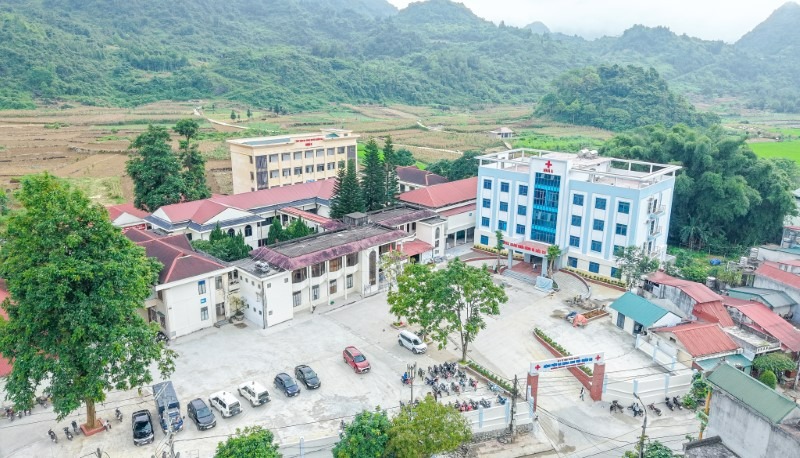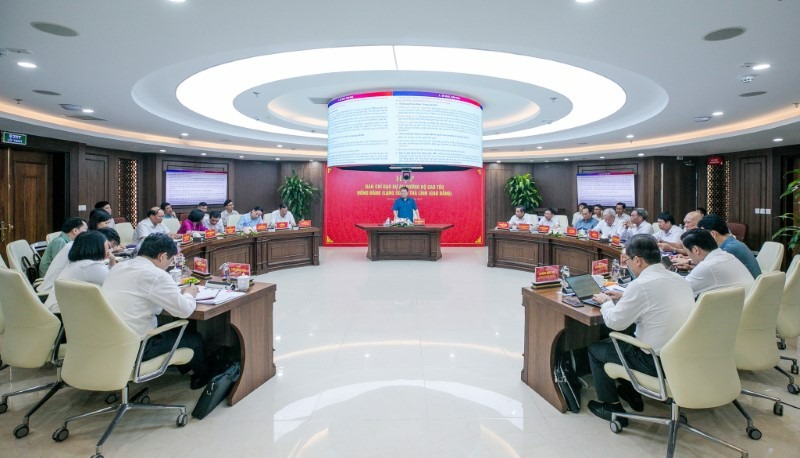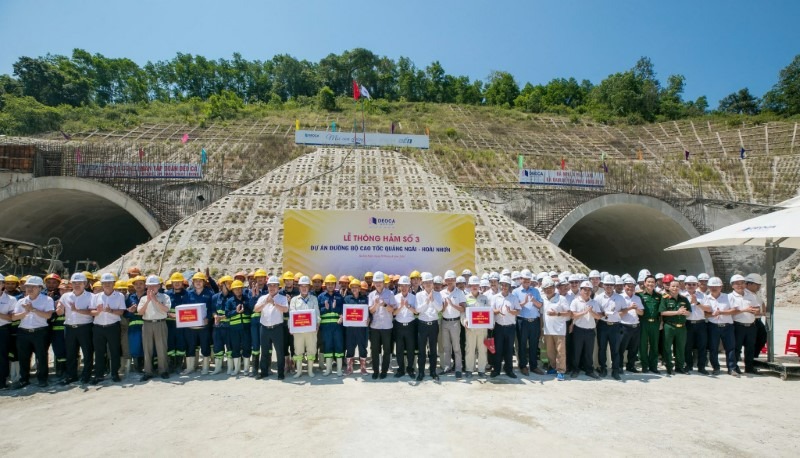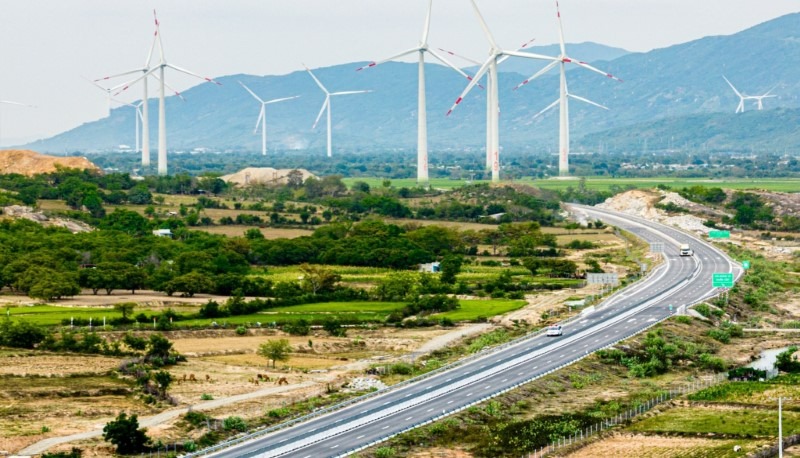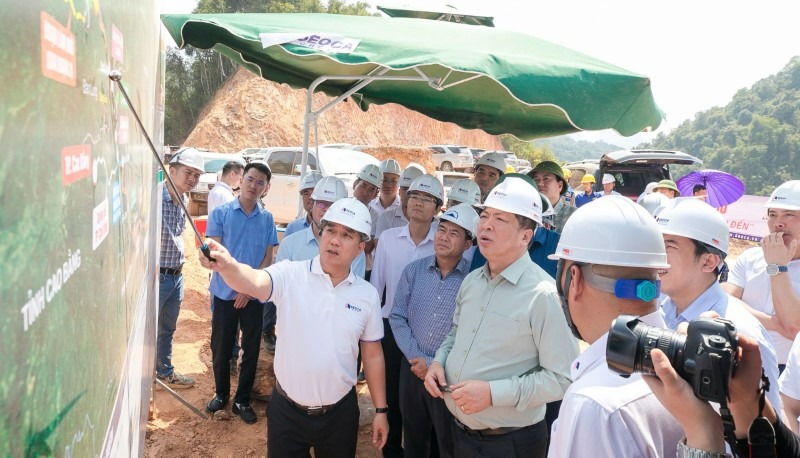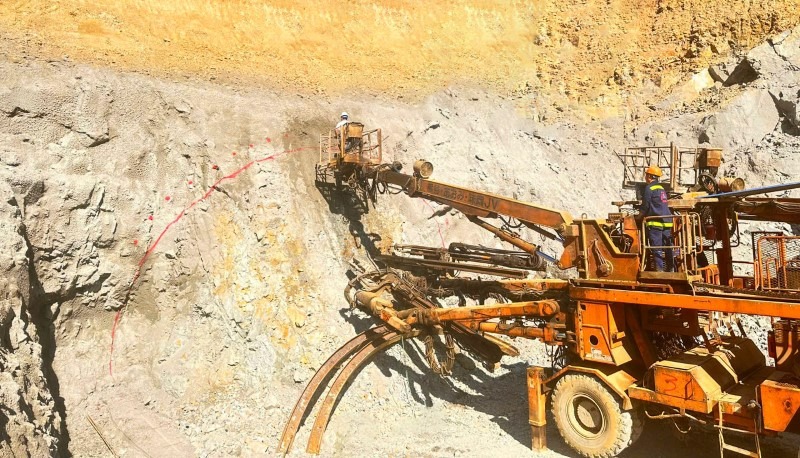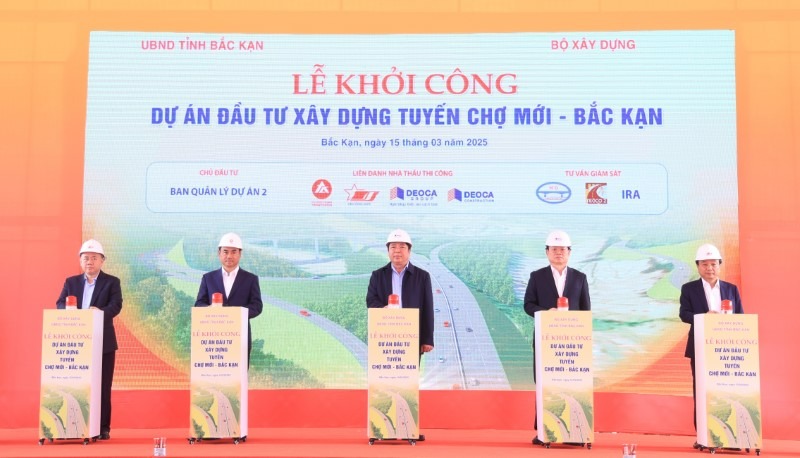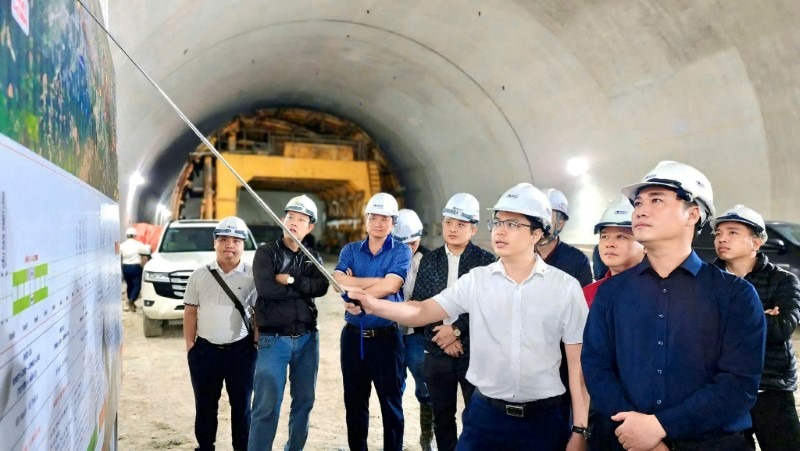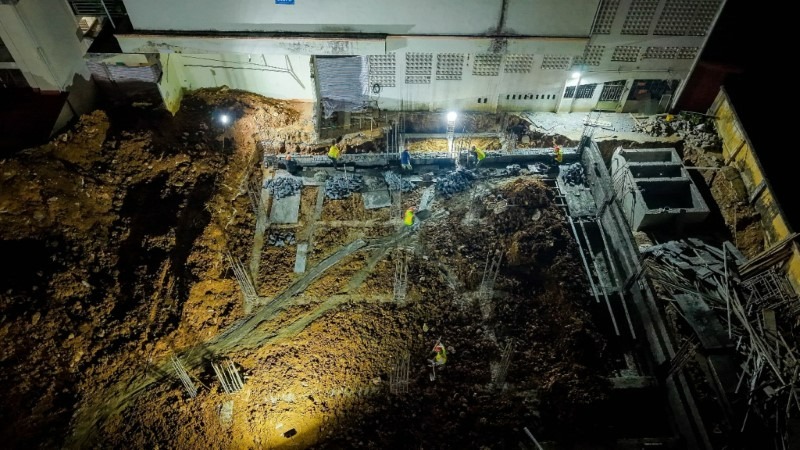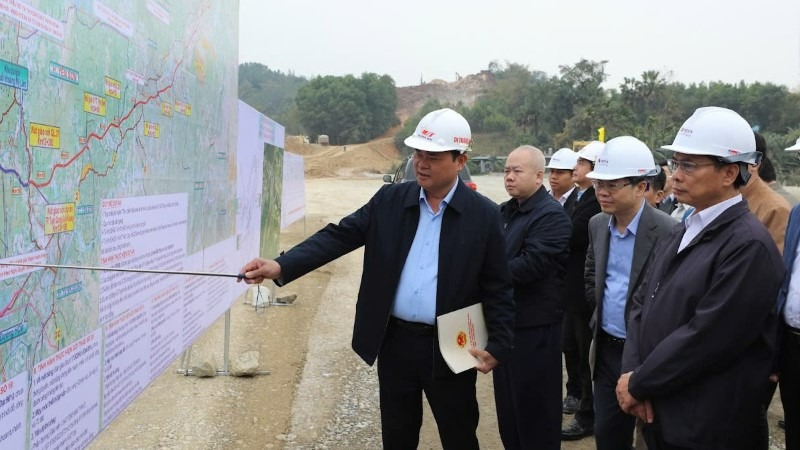“We may not be the first people that come to mind when you think of Hai Van tunnel, but we are certainly the first to show up when an incident occurs.” Mr. Le Duy Hieu - Head of Operations Shift at Hai Van tunnel said, during the 20th anniversary of Vietnam’s longest mountain road tunnel.
Two decades of operation
On June 5, 2025, DEOCA Traffic Infrastructure Investment Joint Stock Company (HHV) held a ceremony at DEOCA Practical & Training Institute in Da Nang to mark 20 years of Hai Van tunnel operations (From June 5, 2005 to June 5, 2025). The event gathered leaders of DEOCA Group, HHV’s executive board, former advisors, employees, and partners who have contributed to the tunnel’s success over the past two decades.
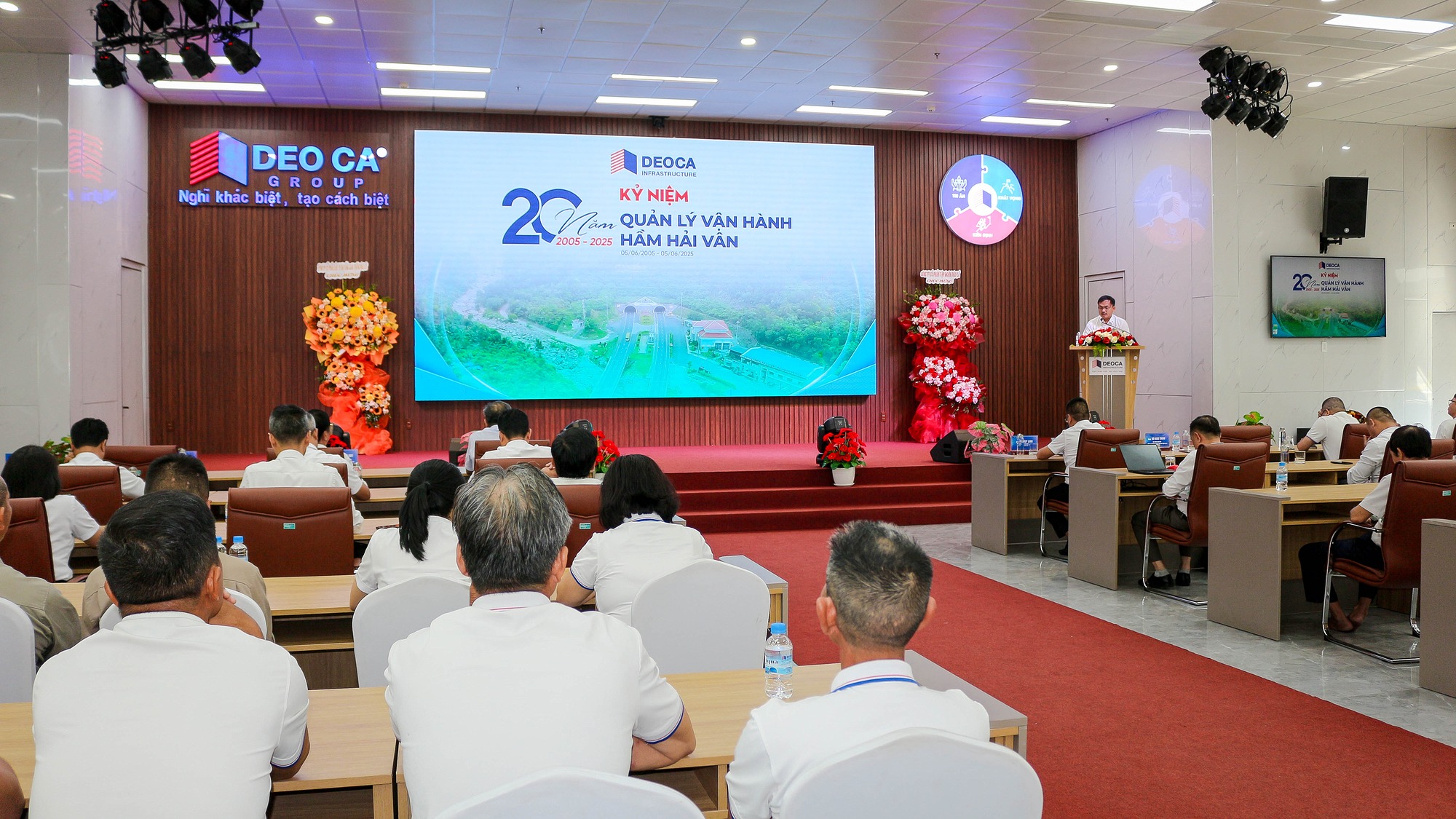

The overview of the ceremony.
During the ceremony, Mr. Vo Thuy Linh, Vice Chairman of the Board of Directors of DEOCA Group, commended the tunnel’s transformation in terms of human resources, management processes and technical standards. He highlighted how a transportation project had gradually evolved into a symbol of reliability and safety. Over the past 20 years, Hai Van tunnel has advanced from its challenging early days into a modern, professionally managed system, operated by a team whose sense of responsibility has grown significantly.
Building on this success, Mr. Vo Thuy Linh affirmed that this serves as a solid foundation for further improvements in operations and management in the next phase. “DEOCA Group and HHV will continue to invest in modern technologies, while developing a high-quality workforce to further improve operational efficiency, ensuring the safety and seamless flow of transportation infrastructure,” he said.
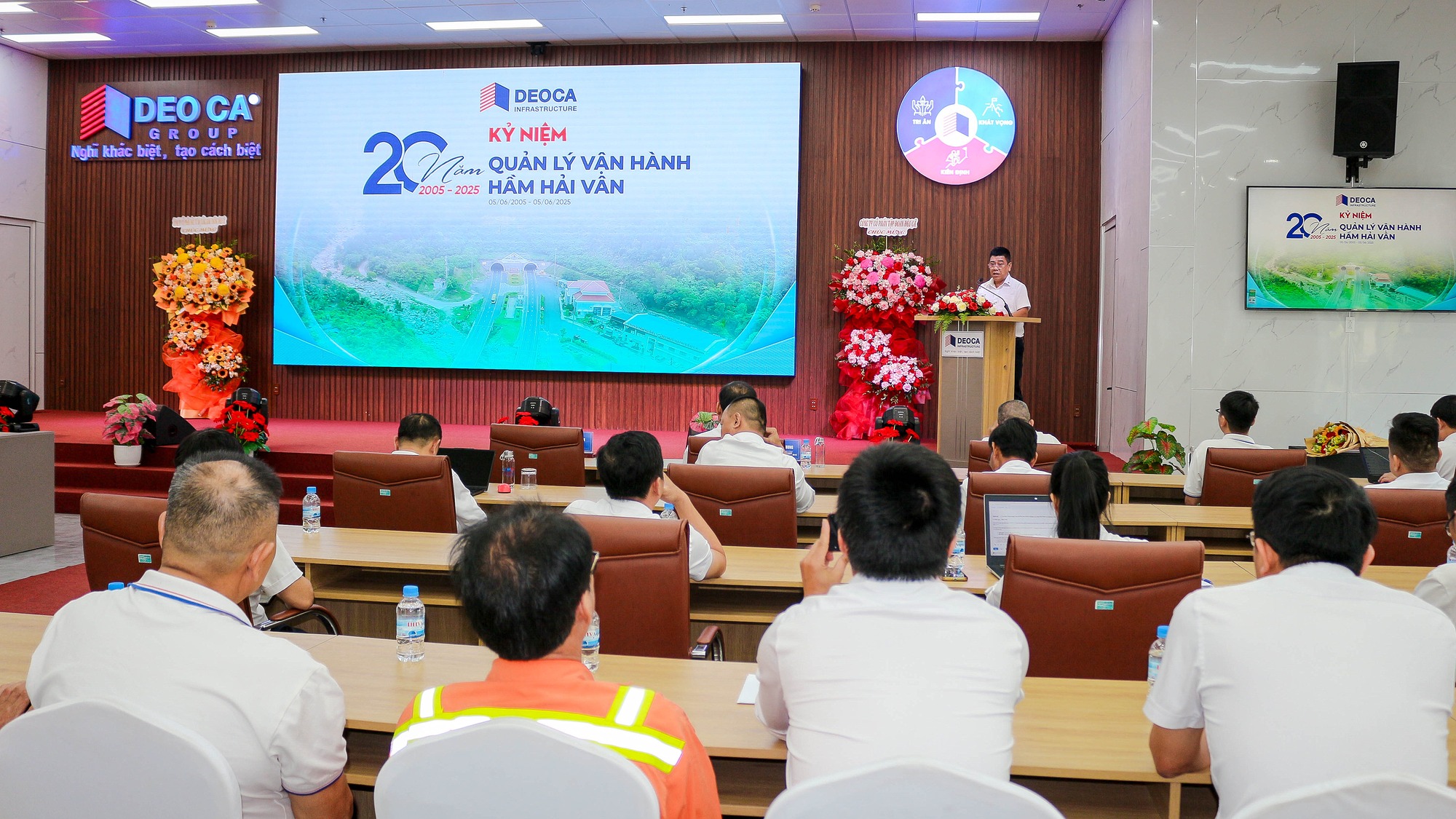
Mr. Vo Thuy Linh - Vice Chairman of the Board of Directors of DEOCA Group, expressed his pride in the 20-year journey of operating the Hai Van tunnel, from its challenging early days to the present.
On behalf of HHV’s Executive Board, Mr. Vo Ngoc Trung - Deputy General Manager of HHV expressed his gratitude to the Group’s leadership for their consistent continuous guidance throughout the tunnel’s development. He also extended heartfelt thanks to the staff and workers who have stood by the project over the years.
“Twenty years is long enough to look back with gratitude, but it is also the right time to look ahead. Today, the Hai Van tunnel is no longer just a piece of transportation infrastructure, it has become a symbol of innovation, public-private partnership and the national aspiration to rise,” Mr. Vo Ngoc Trung said.
Mr. Nguyen Dinh Chinh - former advisor of the Group recalled the early days when he was invited to provide technical support for the project. “Back then, it was a time filled with challenges. Now, seeing this fully integrated and professional operation system, I’m deeply moved and proud to have been a small part of this journey.”
Mr. Mori Takero - Consul General of Japan in Da Nang, who offered his congratulations and expressed appreciation, affirming the strong, enduring partnership between the two nations. “To have collaborated on a large-scale and historic project like Hai Van tunnel is a great honor for Japan. Since its opening, the tunnel has significantly contributed to the economic and tourism development of central Vietnam, particularly Da Nang and Hue. Japan remains committed to accompanying Vietnam on its path of growth,” he said.
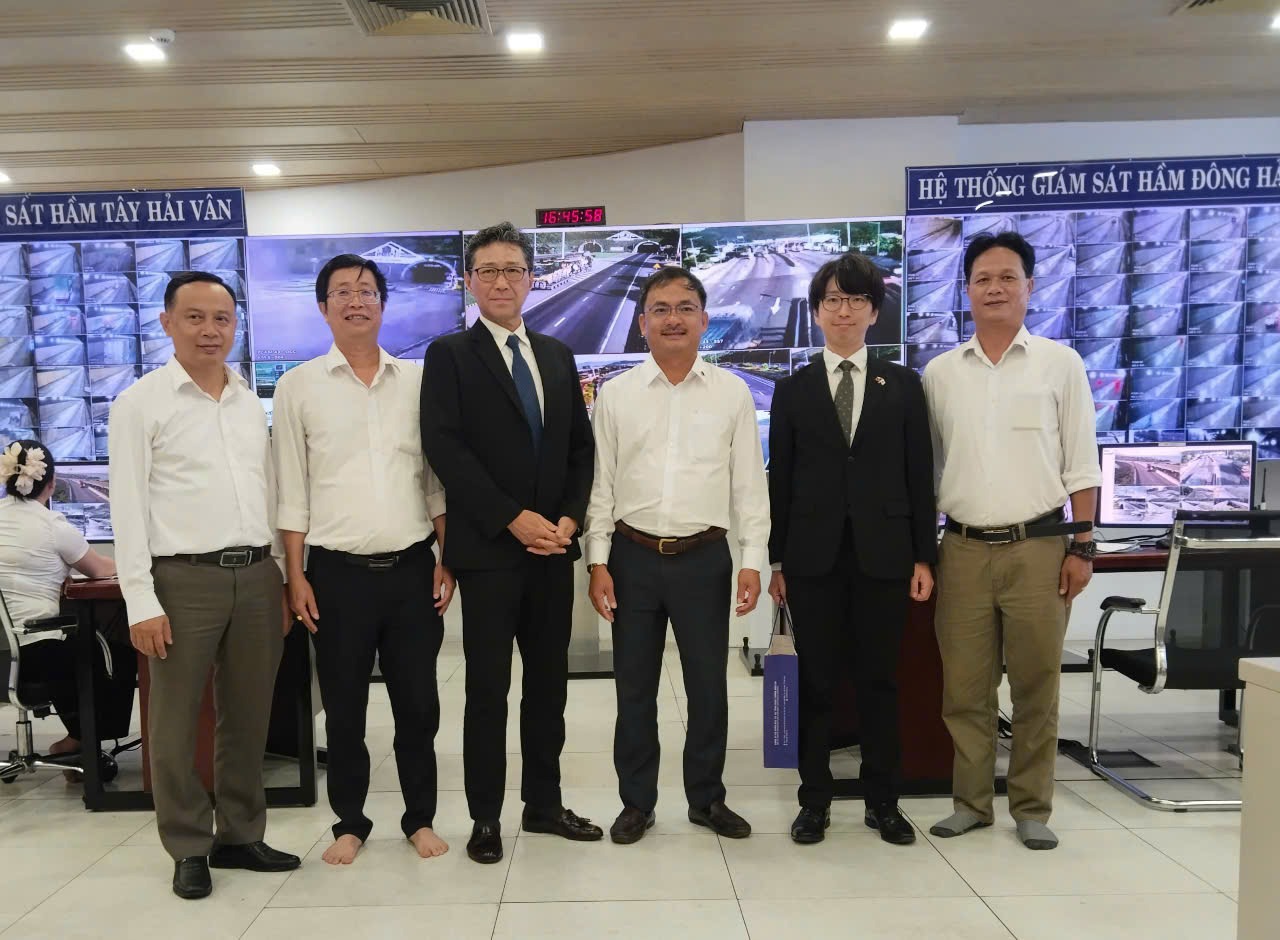
Mr. Mori Takero - Consul General of Japan in Da Nang attended the event to offer congratulations and express his appreciation.
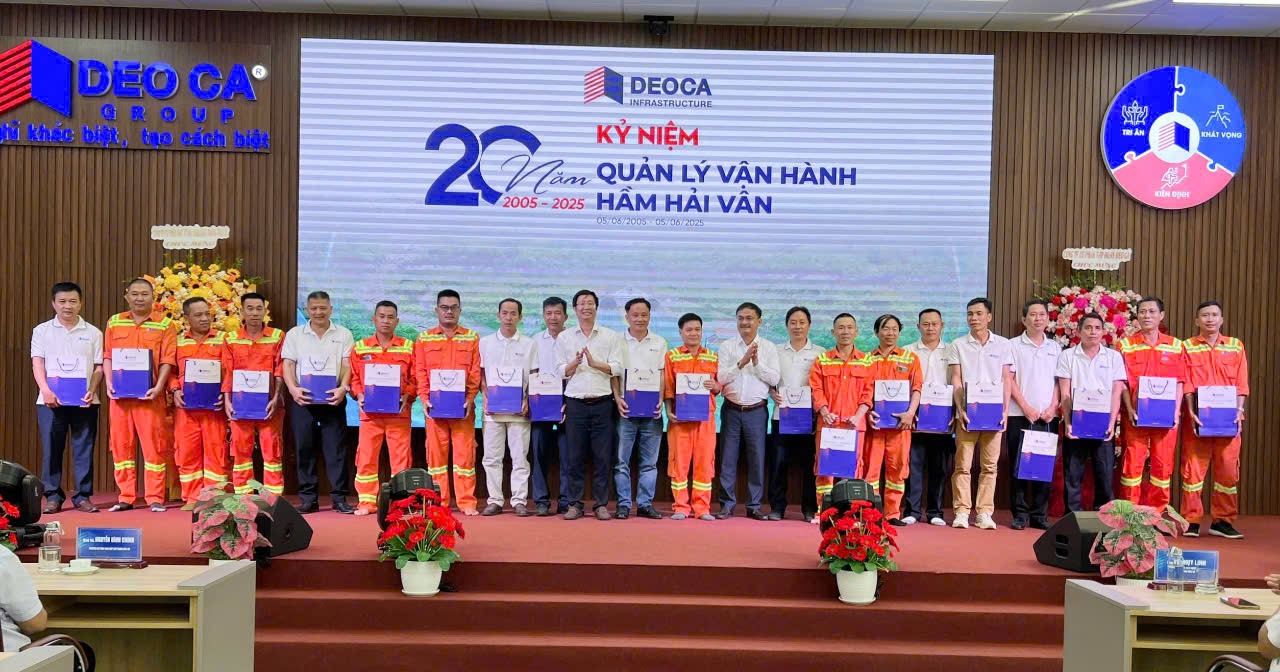
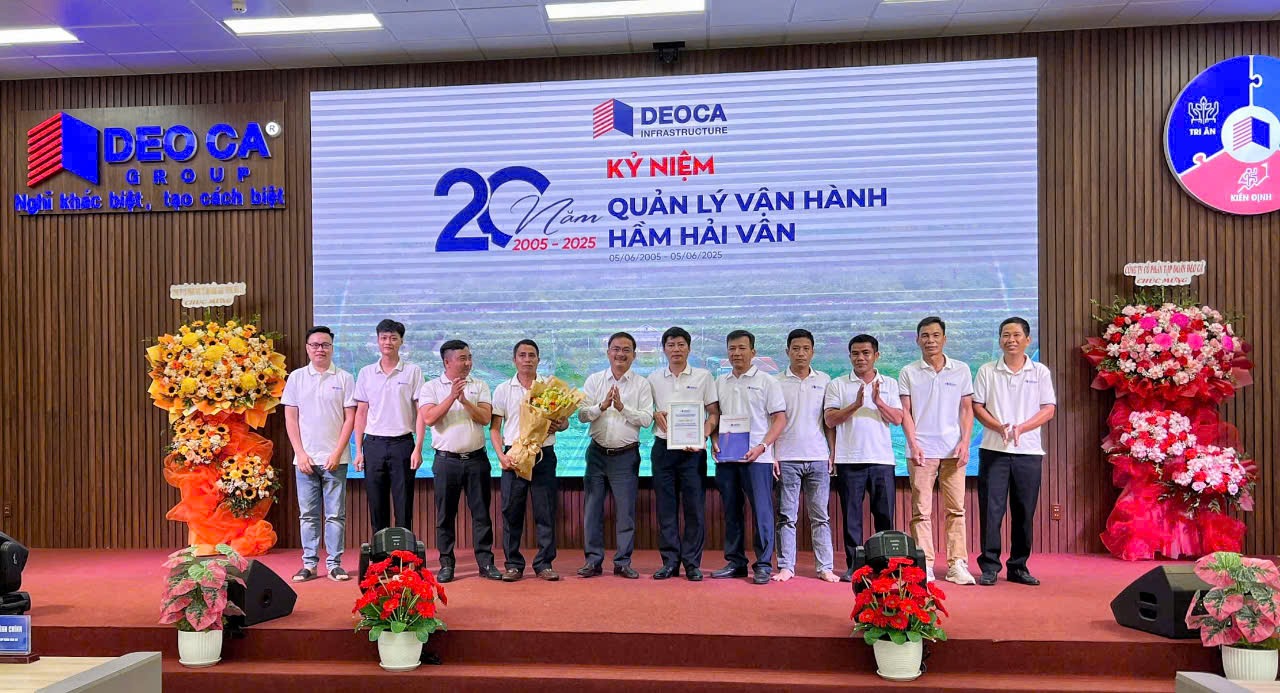
The ceremony also acknowledged the exceptional contributions of employees who have been with the project since 2005, including those still directly involved in operations, rescue missions and maintenance. The shift team on duty on May 30, 2025, received a commendation for their prompt response to an incident on the same day.
A quiet force behind the numbers
By June 2025, Hai Van tunnel had recorded nearly 48 million vehicle transits. Over the past 20 years, the rescue team has handled 156 traffic accidents, 64 fire incidents, and provided assistance to more than 37,500 broken-down vehicles. These efforts have helped minimize loss of life and property.
Behind these statistics is a highly organized and professionally managed system that operates around the clock. A team of 281 staff members, engineers, and technicians works in continuous shifts. Each shift is supported by an on-site command team, which is ready to mobilize human and technical resources to respond instantly to emergencies.

Hai Van tunnel.
Mr. Le Thanh Hai, Deputy Head of the Fire Prevention and Rescue Team, who has been with the tunnel since its inception, shared: “For 20 years, we’ve faced many challenges, but each of us always understood our mission: to ensure every single vehicle passing through the tunnel is safe - day after day, quietly, without negligence. What matters is not overtime hours or recorded achievements, but the trust people across the country place in Hai Van tunnel and in us.”
The tunnel’s operations are backed by modern technology, including an integrated ITS-based management system, which monitors vehicle flow, air quality, lighting, ventilation, and fire prevention. All technical equipment are regularly inspected and maintained in standby mode to ensure visibility, ventilation, and evacuation capabilities under any circumstance.
In addition, the company prioritizes workforce training through internal training, specialized courses, multi-agency drills, and regular performance assessments. internal courses, professional upskilling, inter-agency drills and regular competency assessments. Key activities include operations competitions, Fire Prevention and Rescue training, occupational safety programs, first aid and equipment handling simulations. These programs ensure that the operational team remains highly skilled and well-prepared to manage any situation in this modern road tunnel.
A “path of light” through the Truong Son mountains
Before the tunnel was built, traveling across Hai Van pass was a hazardous route, notorious for frequent accidents and prolonged traffic congestion - a nightmare for drivers.
By 2000, in response to national development, leaders of the Party and State personally inspected the route and resolved to invest in a mountain-crossing tunnel. It took numerous meetings and lengthy discussions to “reach a unified vision” before the first drills could break ground.
Constructed with financial support from Japan’s ODA program, Hai Van tunnel 1 spans 6.28 kilometers and was the longest road tunnel in Southeast Asia at the time of its completion.
On June 5, 2005, the tunnel was officially inaugurated. Travel time over the pass was cut from 45 - 60 minutes to just 10 - 15 minutes. The tunnel eliminated a notorious “accident-prone route” and opened a vital artery, linking Da Nang and Hue as well as the central coast to the rest of the country. The tunnel significantly boosted regional economic growth together with transport capacity for national security, and created favorable conditions for investment and tourism growth.
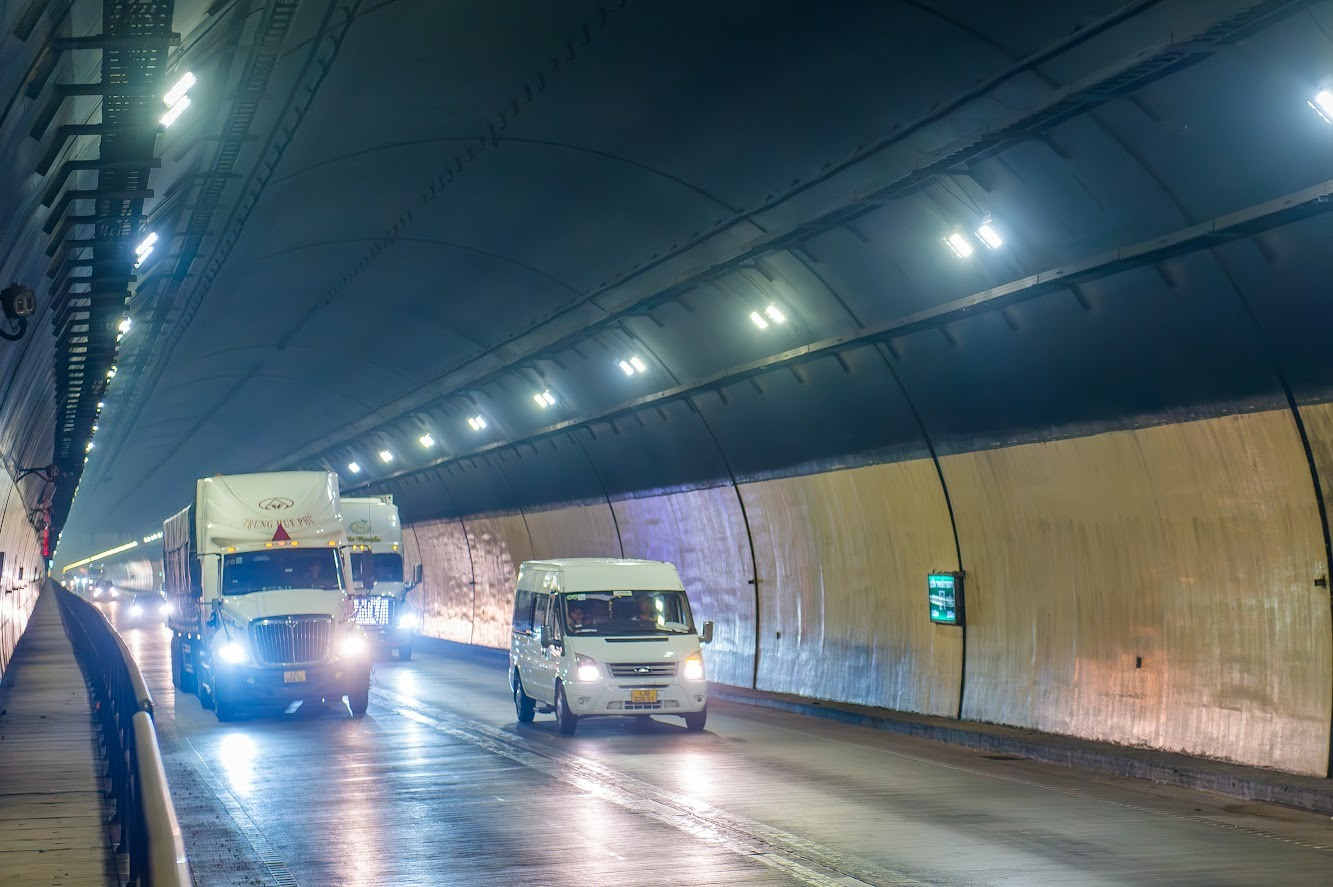
As of June 2025, the total traffic volume passing through Hai Van tunnel had reached nearly 48 million vehicles.
As the operations engineers noted, building the tunnel was already a difficult task. However, operating a 6-kilometers tunnel through the mountain, with modern equipment and almost no available documentation or experience in 2005, posed an even greater challenge for the Vietnamese team.
In 2016, DEOCA Group officially took over the operation of Hai Van tunnel 1 while also launching construction of Hai Van tunnel 2. This second project presented significant engineering difficulties, as it had to be built alongside without disrupting traffic operations of Hai Van tunnel 1. Nevertheless, with accumulated expertise and determination, the Group completed the new tunnel in just over three years.
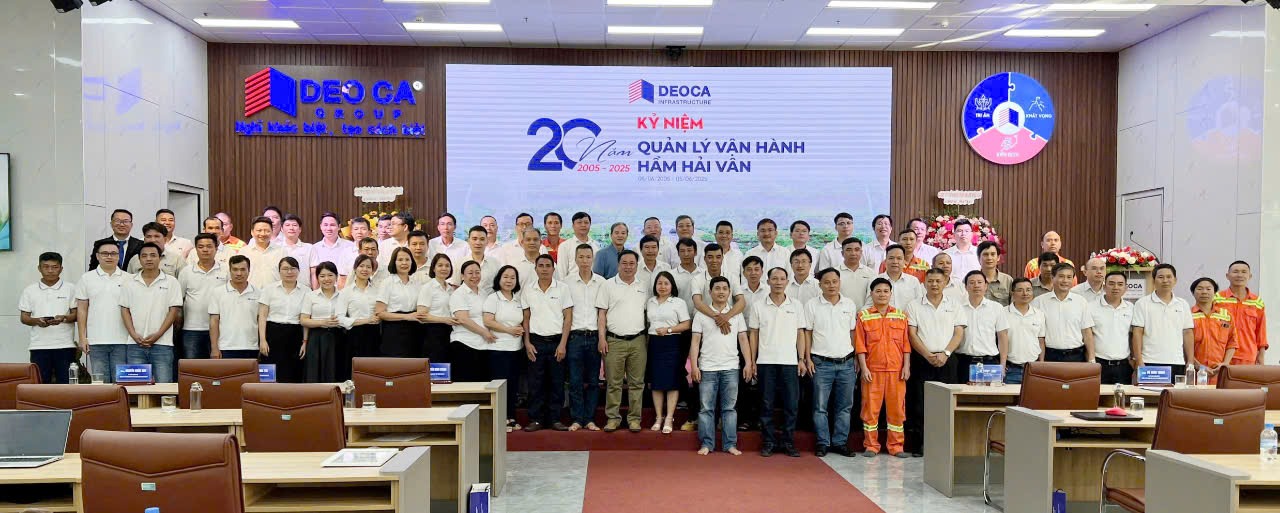
Employees and staff took photos after the ceremony.
From a “path of light” through the Truong Son mountains, Hai Van tunnel has become a historic milestone and a proud symbol of the Vietnamese people’s ambition to master tunnel construction and operation technologies.
News: Chi Lam - Photo: Tran Trung


